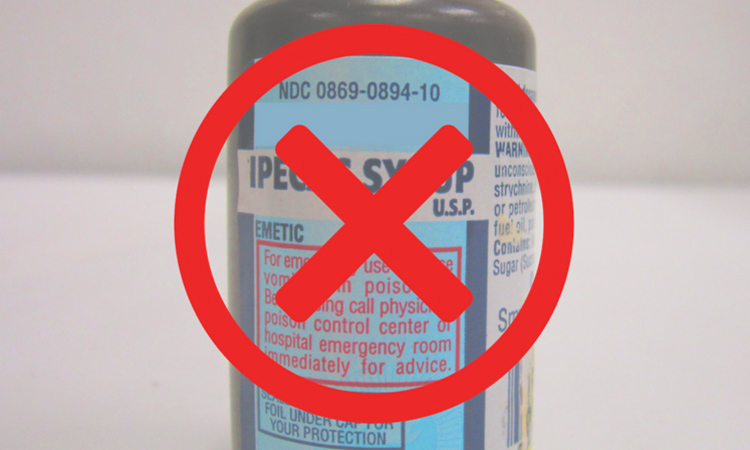There’s a saying that what goes up, must come down. When it comes to poisons, many people think that what goes down must come up. But that is not true! Vomiting (or throwing up) may seem like the best response when someone has swallowed something dangerous. Get it out of the body as quickly as possible! But, it turns out that forcing someone to throw up can actually be more dangerous than leaving the substance in the stomach.
Over the years, we’ve learned a lot about medicine and how to treat people exposed to poisons. We used to recommend that people make someone throw up if he or she swallowed a potential poison, but not anymore. Let’s go over how our knowledge has changed in the past 30 years.
Syrup of Ipecac
Syrup of ipecac is a drug made from the roots of a plant that grows in Latin America. It was used in the past to make someone vomit. In the 1980s, the Food and Drug Administration (the U.S. group that regulates medicines) approved its use. Many medical organizations recommended that all parents of young children and preschools have it on hand to make children who swallowed a poison throw up.
What We Know Now
Fast-forward to 2003, and researchers found that people who had swallowed poisons and been given ipecac did not go the emergency room less or end up less sick than those who had not been given ipecac. Long story short: it wasn’t helping. Plus, the researchers found that 61% of children who had been given ipecac didn’t need it because they had swallowed something non-toxic in the first place!
Throwing Up Could Make Things Worse
Throwing up after swallowing any substance can actually cause more harm. For example, forcing someone to throw up can lead to the substance being breathed in to the windpipe and lungs on its way back up the esophagus. This can lead to choking. Also, a substance like a strong acid chemical will burn the throat as it is swallowed, so it will burn the throat again as it is thrown up.
And don’t even think about using your finger to make someone gag. Adult fingers are much larger than a child’s throat. Trying to force a child to vomit in this way could cause serious injury. And the adult will likely suffer a bite on his or her finger, which can lead to infection.
What about Fido?
While we never recommend forcing a person to throw-up, the Pet Poison Helpline does still recommended dog owners keep hydrogen peroxide (3% solution) in their home to force vomiting. However, this is not recommended for all dogs or all ingestions, so always contact your veterinarian or a pet poison specialist before making your dog throw up.
So, What Should You Do?
If someone swallows something, on purpose or unintentionally, never force him or her to throw up. First, remove any extra substance from the mouth. For example, if you find your toddler chewing on medicine, remove any pill bits from his or her mouth. Then, grab your phone and dial 1-800-222-1222 to talk to your local poison expert. The nurse or pharmacist who answers the phone will give you specific advice based on what was swallowed, the person’s weight, and how long ago it happened.
You can also throw out that syrup of ipecac you were saving for “just in case.” You won’t be needing it.





Leave a Reply